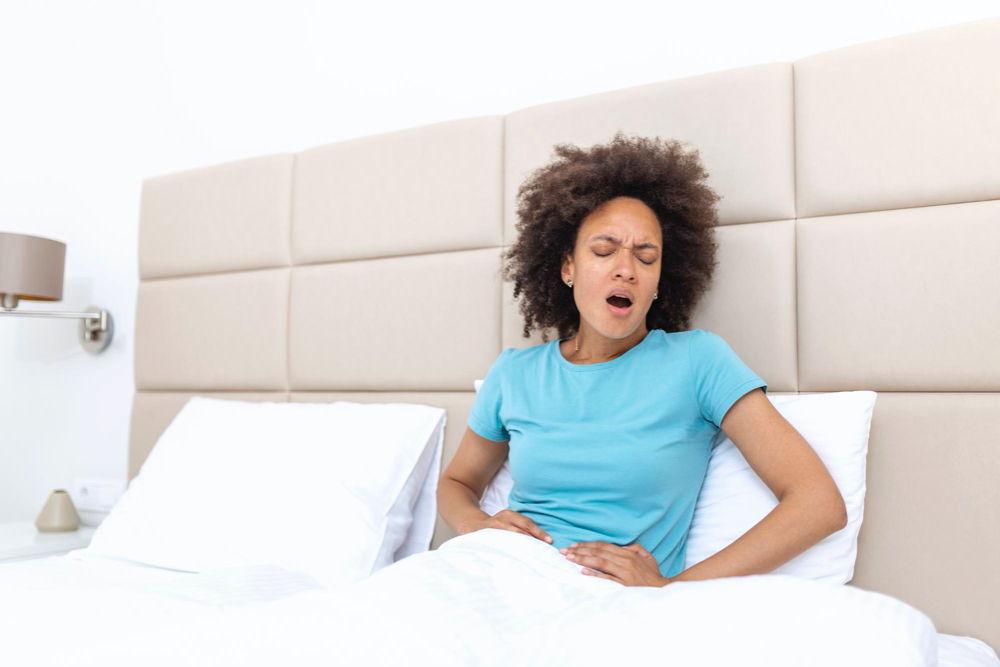- Fast results
- 4,000+ locations
- 4.8 star rating
Need Help? (888) GET LABS


A vaginal yeast infection causes intense itchiness or burning sensation, cottage cheese discharge, soreness, and rash around the vulva and vagina. It’s caused by the fungus Candida albicans, which thrives in moist body parts like the mouth, gut, and vagina.
To get rid of vaginal yeast infection or vaginal candidiasis, see your doctor for diagnosis and prescription, typically including antifungal drugs. Supplement your medication by improving your immune system through foods rich in probiotics, vitamins C and E, as well as antifungal substances.
Read on to learn more about the most effective vaginal yeast infection treatment.
Seeing a doctor should be your first step as soon as you detect symptoms of vaginal thrush. Although it’s easy to take it for granted, especially if these symptoms are subtle, you’ll most likely benefit from immediate medical assistance as it prevents the condition from recurring.
Set an appointment with your gynecologist to know which tests you’ll need to take. Your doctor will most likely perform a pelvic exam and have the yeast infection discharge tested in the lab.
But before your healthcare consultation, make sure to note when you first noticed the vaginal infection symptoms and how severe they are.
Although yeast infection is not necessarily a sexually transmitted disease (STD), you can potentially transfert it to your partner. Hence, during your annual exam with your gynecologist, vulva yeast infection is often screened along with common STDs.
Antifungal drugs often make up the primary treatment for vaginal yeast infection. These could come in the form of pills, creams, gels, and probiotics. Although these are mostly over-the-counter medications, their dosage and length of use must be determined by your doctor first.
Your risk of developing fungal overgrowth leading to vagina or vulva yeast infection depends on factors such as pregnancy, diabetes, use of antibiotics and birth control, as well as having a weak immune system. While the others require additional evaluation and perhaps separate treatments or regulations, you can do something about the latter.
Increasing your intake of foods rich in vitamin C can improve your immunity. On the other hand, vitamin E can help alleviate inflammation caused by Candida infection.
Aside from strengthening the immune system, specifically in the localization of immune cells to a particular infection, vitamin C can assist in suppressing the growth of C. albicans.
Hence on top of your vaginal yeast infection treatment, add more fruits and vegetables packed with vitamin C to your diet. These include bell peppers, citrus fruits, broccoli, Brussels sprouts, strawberries, and kale.
Yeast infection in women can cause vaginitis or inflammation of the vagina. Although this is a natural immune response against the pathogen (causative agent of the disease), it can further damage the tissues in the vaginal wall.
To help regulate inflammation caused by Candida, be sure to add vitamin E to your supplements or increase your intake of its rich sources, like nuts, seeds, and sunflower oil. According to research, vitamin E has anti-inflammatory capabilities against C. albicans. Hence, it may support your vaginal yeast infection treatment.
Yogurt and other food items with probiotics or good bacteria can help eliminate fungal overgrowth. Research revealed that eating yogurt can minimize the colonization of Candida in mucosal areas such as your mouth and vagina.
It balances the population of yeast and bacteria in the vaginal environment. For example, Lactobacillus, a bacteria found in yogurt, produces hydrogen peroxide that kills the fungi, causing vaginitis.
You may also encounter recommendations on applying yogurt directly to your vagina. Although this is economical and, in some way, practical, it’s best to check Rememberctor. Keep in mind that yogurt also contains sugar that can encourage yeast growth, worsening the infection.
In addition, try fermented foods like kombucha, pickles, kimchi, and kefir. Adding these to your diet also increases lactobacillus, acidophilus, and other good bacteria in your system.
Keeping your private area dry and clean comes as a preventive measure and an extra step in vaginal yeast infection treatment.
Fungi thrive in a moist environment, which is already a given in the mucosal wall of the vagina. Overgrowth, however, can be encouraged when moisture extends into the outer vaginal region or the vulva.
Nonetheless, you can avoid this through the following practice.
Did You Know? Much like in vaginal yeast infection, poor hygiene can also worsen several sexually transmitted infections (STIs). However, this does not directly cause the condition as some people believe so. Learn more about other common STD myths and whether there’s truth in any of them.
You may encounter several pieces of information on yeast infection treatment you can do on your own. While it’s easy to be drawn to these tips, it’s still the wisest decision to check if they’re effective and safe.
Nevertheless, checking with your doctor is still the most recommended action when dealing with vaginal yeast infection. Home remedies are practical and cheaper alternatives, but they do have several cons, including the following.
Antifungal properties have been noted in common yeast infection home remedies such as using tea tree oil, boric acid, apple cider vinegar, and garlic. However, their clinical application has not been established yet due to the need for additional evidence.
For example, boric acid suggests potential fungicidal activities in the skin. However, it’s not clear if it has the same effect on a mucosal environment. Plus, other variables have to be considered, including whether there’s damage to the vaginal wall.
As these substances are often applied directly to the vagina, they should have precise regulation. Otherwise, they may cause more damage than progress.
The effect of home remedies for yeast infection on one woman may be different on another. Your skin may be sensitive to specific components, causing further irritation and potentially spreading the infection to other areas.
For example, several resources recommend using garlic as a suppository against vaginal yeast infection due to its potent antimicrobial property. However, doing so unwittingly can potentially lead to conditions like irritant contact dermatitis. This, along with the insufficient clinical data on the use of garlic to combat vaginal candidiasis, make it an unreliable remedy.
Aside from causing damage to the vaginal wall, home remedies can also wipe out a significant portion of the probiotic population in the vagina. As a result, this can further encourage fungal overgrowth as good bacteria function to police the spread of yeast.
It’s easy to assume that vaginitis can be due to yeast infection. However, its symptoms can be similar to other types of infection, such as bacterial vaginosis, caused by the imbalance of good and bad bacteria in the vagina.
If this is the case, you’ll need a different course of treatment. Hence, if you rely solely on home remedies, you may fail to relieve the symptoms or eliminate the infection altogether.
There are instances wherein a mild yeast infection can clear itself. However, there’s no telling if this is guaranteed. The infection can recur and become more disruptive than it previously was. Therefore, the best course of action is to have it properly diagnosed, get the recommended treatment, and follow through with the preventive steps.
You can’t turn a blind eye to a vaginal yeast infection for two reasons. First, leaving a yeast infection untreated can worsen the symptoms. It may come to a point where you’ll be unable to carry out your daily routine and tasks. Second, the consequences can become permanent. Vaginal yeast infections may cascade to pelvic inflammatory disease (PID), scarring from sores, and even infertility.
The most surefire and fastest way to deal with recurrent yeast infections is to see your doctor, get tested, and follow through with the prescribed treatment. Home remedies for yeast infection may be appealing, especially if you read reviews on how they work or due to economic reasons. Still, they don’t guarantee the complete elimination of vaginal candidiasis. Hence, it’s still a wise choice to heed medical treatment.
Getting rid of female yeast infections should be a priority for your health. While it doesn’t pose a serious threat in most cases, it can disrupt your routine and make you feel uncomfortable throughout the day.
And although home remedies may help, you’ll be at risk of developing other problems without a guarantee that vaginal thrush will be completely treated. That said, book an appointment with a healthcare provider to help you with the most suited treatment for vaginal candidiasis.
Additional Readings:
Additional Readings

10 Things you may not know about your Sexual Health
To learn 10 things about your sexual health click here.

7 Subtle Habits That Sabotage Women’s Health and Wellness
These habits can ruin a women's health. Learn about these so you can avoid them.


We now offer pharmacy discounts through our PersonalabsRx platform.
We now offer pharmacy discounts through our PersonalabsRx platform.